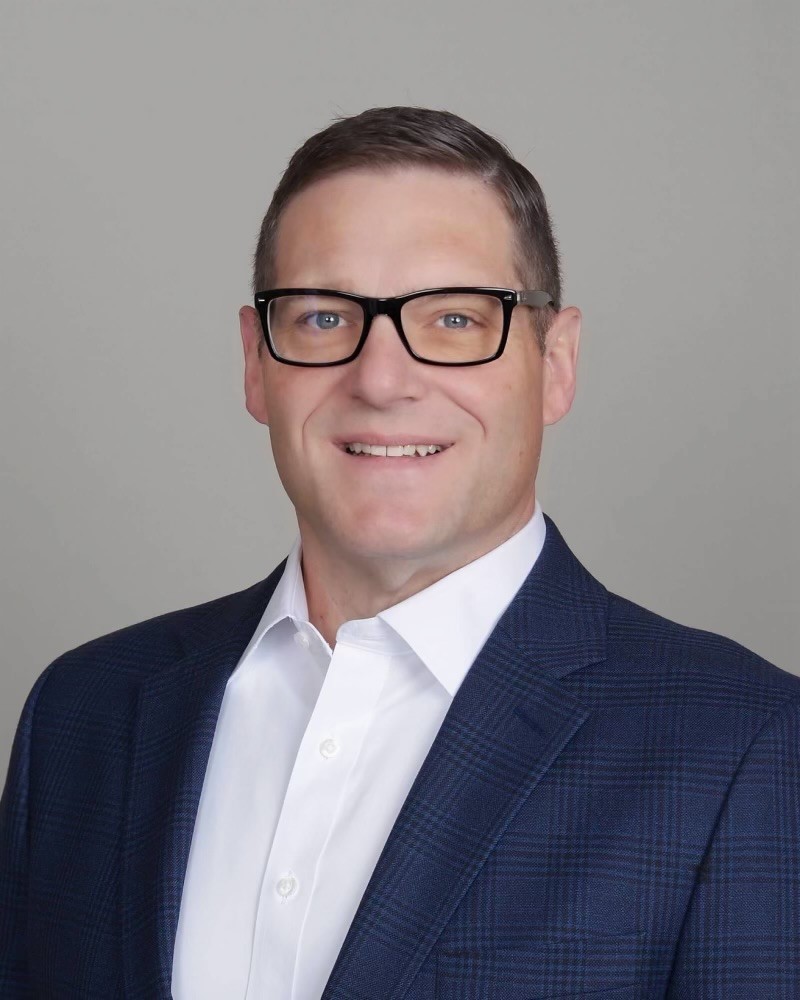Customer Spotlight: Steve Moore, Uber Freight/Transplace
This month’s newsletter is one in a series about individuals working in continuous improvement. This month I spoke with Steve Moore, a LSS Black Belt with Uber Freight, formerly Transplace. Steve completed Black Belt training in 2007 and is currently head of Transportation Management Operations. Uber Freight delivers an end-to-end enterprise suite of Relational Logistics to advance supply chains and move the world’s goods. They align shippers and carriers through Dynamic Capacity. And with their Expert Partnership, the company pairs deep industry expertise and high-touch service to provide their customers with the right blend of human and tech solutions for the best results.
When did you begin working at Transplace, and what was your role? What other areas did you work in before working in Continuous Improvement?
Well, I kind of fell into it. I got a degree in mathematics from the University of Arkansas and needed a job. One of my classmates ended up at Transplace. And said, hey, we’ve got a couple of openings. That was in August of 2000.
Primarily, my role has always been in operations. And we call operations at Transplace and Uber Freight our Transportation Management business. Our industry used to be known as a 3PL – A third party logistics company, right? But we’re so much more than that. Today we handle the order-to-cash process for many customers, so we are considered a 4PL – fourth party logistics company.
How and when did you first get involved in CI?
I kept hearing people talking about Six Sigma in the hallways in 2007 and thought, well, what’s that? I had a math degree and understood sigma was standard deviation. Still, I didn’t understand the concept of LSS. Studied it a little bit and thought OK, this could be for me. I like this kind of thing.
I was an individual contributor at the time. I wanted to go for Green Belt training. We were only putting management through GB back then. It was pretty early in our program. I think we started in 2006. And so, I really had to lobby to get approved to attend Green Belt. I want to be a part of this. And I found I really liked it. It fit with my skill set. I was really drawn to the project nature of things. I flew through GB training and got certified really quickly.
And then, hey, I want to be a Black Belt. and went through BB training. Began working on projects. I worked about three years in our Continuous Improvement group. I would look around and ask my colleagues ‘Show me what you’re doing’. And learned from them.
You were involved in teaching LSS Green Belt classes. Can you talk about that experience?
Teaching was one of the things I truly loved. It was very rewarding to be able to teach our associates lean six sigma concepts and watch them make an impact. At that time, we were teaching two GB classes per year. I did that for three years. So taught a total of six Green Belt classes.

You also helped start an annual Lean Six Sigma promotion week. How did that come about and what did you do?
I wanted to demystify Lean Six Sigma for our general population. So I asked management to let the CI team create what we called a Lean Six Sigma Week. And during that week, we held abbreviated training classes on selected topics for anybody who wanted to participate. We would probably do 8-10 classes that week.
We also held Quick Win contests. Anybody that identified something that makes you go, Huh. Why do we do that? I must do something about it. Let’s fix it. So, we would do that and offer prizes to the winners of the contests. I really loved teaching and getting this out to the employees. You know, let everyone that wants to participate do so.
Can you share a little about your experience as a BB?
Coming from operations where things were at a fast pace that was my approach. I would work on 2-3 projects at a time. By the end of my three years in the CI program I had a portfolio of 16 projects. I was really proud of that as I knew Transplace had invested in me significantly. During that time, I also got other professional certifications. Lean Six Sigma kicked it off for me. I was at a point in my career where I was just thirsty to learn. So, I ended up getting a CSCP certified supply chain professional from APICS, and also got an RSCC, which is retail supply chain certification.
As I recall you liked it so much that you wanted to stay in Continuous Improvement. But your company had other plans. Can you talk about that?
Quite honestly, Russ, I enjoyed CI so much that I lobbied to stay. I ended up writing a Jerry Maguire-type manifesto as to why we need continuity in the program. And I had plans to grow up and become our Lean Six Sigma Champion. Then I will become the VP of Lean Six Sigma and that will be the pinnacle of my career. I recall talking to my wife about that a lot.
It’s kind of funny how God works. The company said ‘Steve, that’s sweet of you. We think that’s really nice. But we think you should do something else. It’s time for you to go back to operations.’ And so I jumped into leading some accounts as a general manager in operations.
Can you share a little about how your experience as a GB and BB affected your leadership style after moving into a management role?
Well, as a Lean Six Sigma practitioner you don’t have authority over people on your team. You’re working with multiple functional areas. Some of those areas have competing incentives. And you really have to kind of develop the people aspects of that. The influence you can have as a leader, so I think all of that helped me later as a manager.
The mindset LSS gives you, the glasses you look through to try to resolve issues, has inevitably been something that has catapulted my career to where I am today. Also, the exposure to leadership, without question, helped me. We took it seriously – the Black Belts – in making presentations to the executive committee. So I had a lot of exposure to senior leadership as a really young associate. And I developed a competency with them.
Here’s another example of a skill I picked up working on a project with a customer in Pittsburgh. We had both Transplace staff and customer staff on this team. We were looking at their contract management process.
I remember going through the Measure Phase just fine. And then in Analyze decided to use an Ishikawa [fishbone] diagram. Put it up there and we started to develop the bones. And nobody got it. Literally nobody got it. You would have thought I was introducing something so alien. I’d done plenty of projects and been able to kind of walk people through this. But this didn’t work.
And I thought I don’t want to beat my head against the wall. So I went searching for an alternative. And came up with what is called a reframing matrix. Which is basically the same thing, except the ‘head’ of the fish is in the middle and each quadrant around it became the ‘bones’ of the fish. And I flashed that up. And suddenly everyone got it.
So that’s a lesson right there. You really have to individualize things for each team. And as the leader I had to create an environment where the solution could emerge. Instead of forcing them to follow a process I had in mind or that LSS says we have to dictate. So that was a really cool thing for me to learn fairly early in my career.
Do you still use LSS tools / thinking in your current role as an executive?
I’m not kidding. I’m looking at my whiteboard right now. And it’s time to do budget. And I’m developing strategies with my team. I literally went back to the Project Charter. Gave a template to each manager and said here’s a concept. We can leverage this for developing our strategy. And the charter immediately popped in my mind. Yes, I do still use tools today.
From a more high-level perspective, in my current role as head of operations I have to create an environment by which an optimal solution can emerge to any issues or problems. That’s the goal of my role. And to do that, I have to provide support on projects where I don’t have to have the answer. I can’t have all the answers. I’m a leader. I just have to create the environment where the answer can emerge pretty effortlessly and as efficiently as possible.
So asking the right questions. What are we really trying to solve here? Providing extreme focus to the issue and problem so we can really dive in. Otherwise, the peripheral can get in the way really quickly. You know what I mean? That’s the kind of thing we have to really get to.
In my role I also use LSS thinking when managers come to me for help to resolve an issue. My mindset is to determine things like: How did you come up with this solution? Did you truly examine the root causes? Or stop at symptoms? Did you exhaust your resources in developing the solution? Or settle on a more basic solution? Did you involve the right people? Or develop the solution in a vacuum?
Looking back, how did LSS affect your career path?
As I noted previously, after my three years in the CI Program I went back into Operations. As I progressed through the organization I became a general manager of operations. Then became a Director, then Vice President, then a Senior VP. And now Head of Operations. It’s incredibly exciting.
Which I could never have dreamed of, you know? Oh yeah, ultimately my path took me to effectively own the responsibility of our CI program in my role as Senior Vice President of Operations. So that’s why I said God works in mysterious ways…what a blessing.

If you are ready to start your own Lean Six Sigma journey, we have an Accelerated Black Belt class starting this fall! Find out more and register for our Accelerated Black Belt class. You can learn more about all of our classes here. Hope to see you there!


